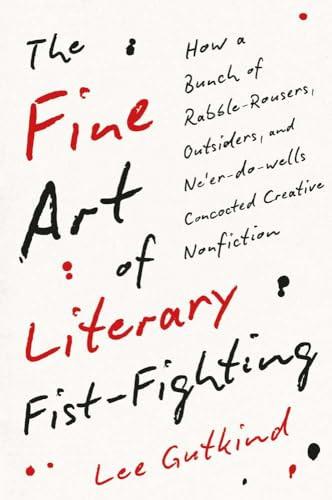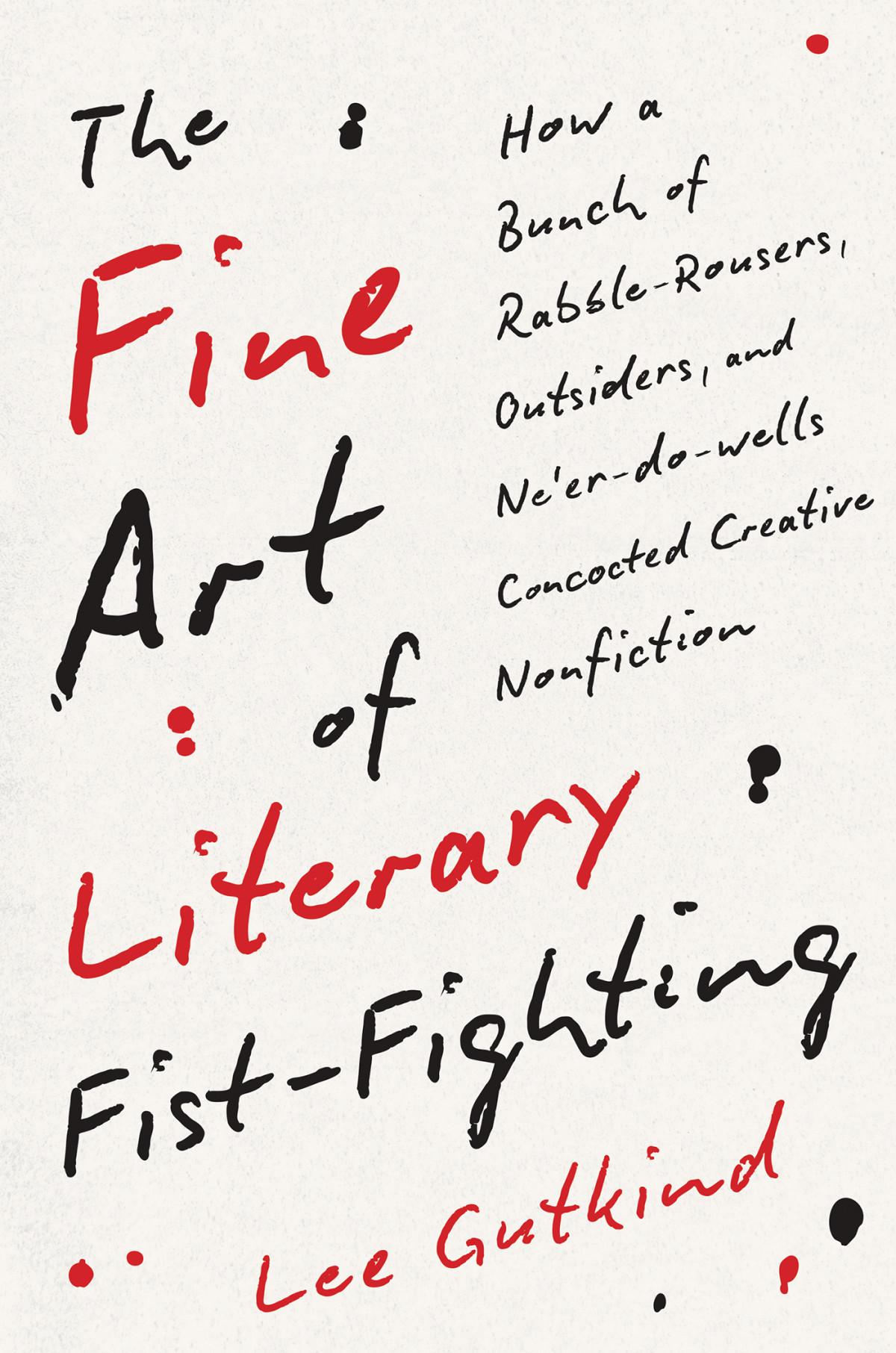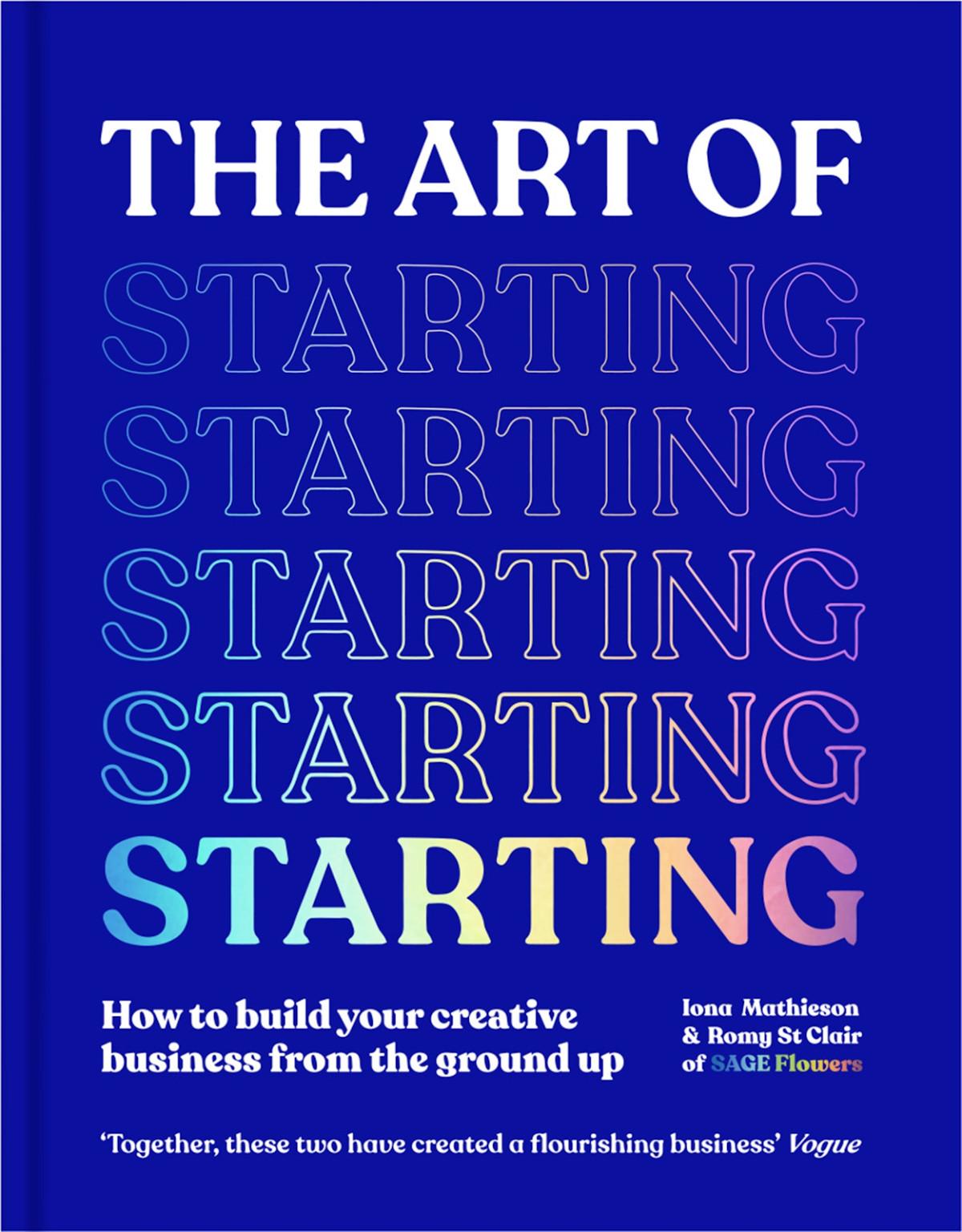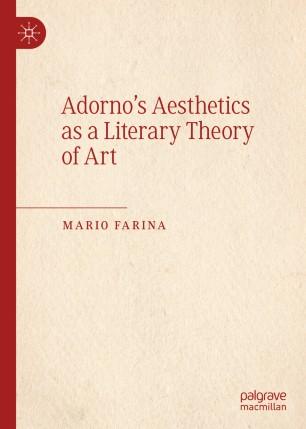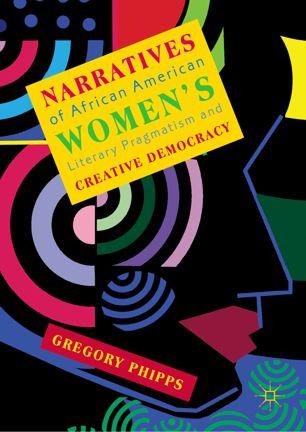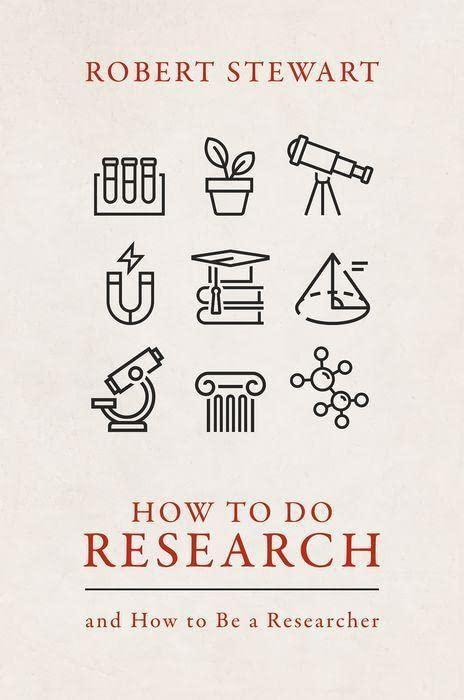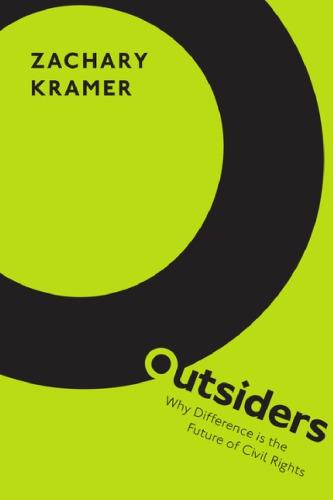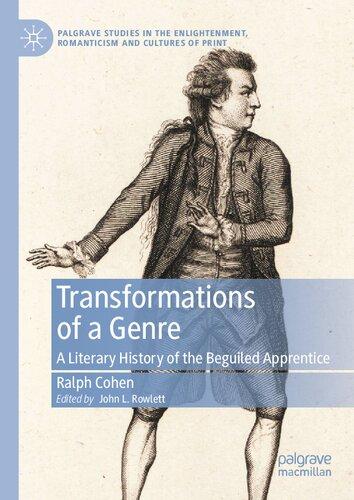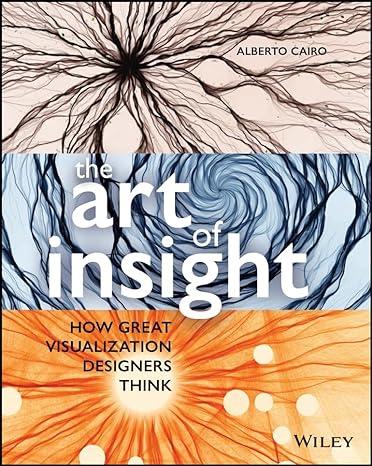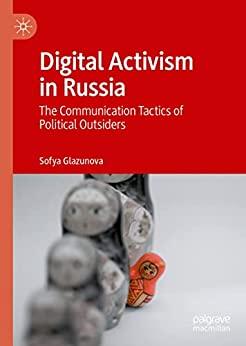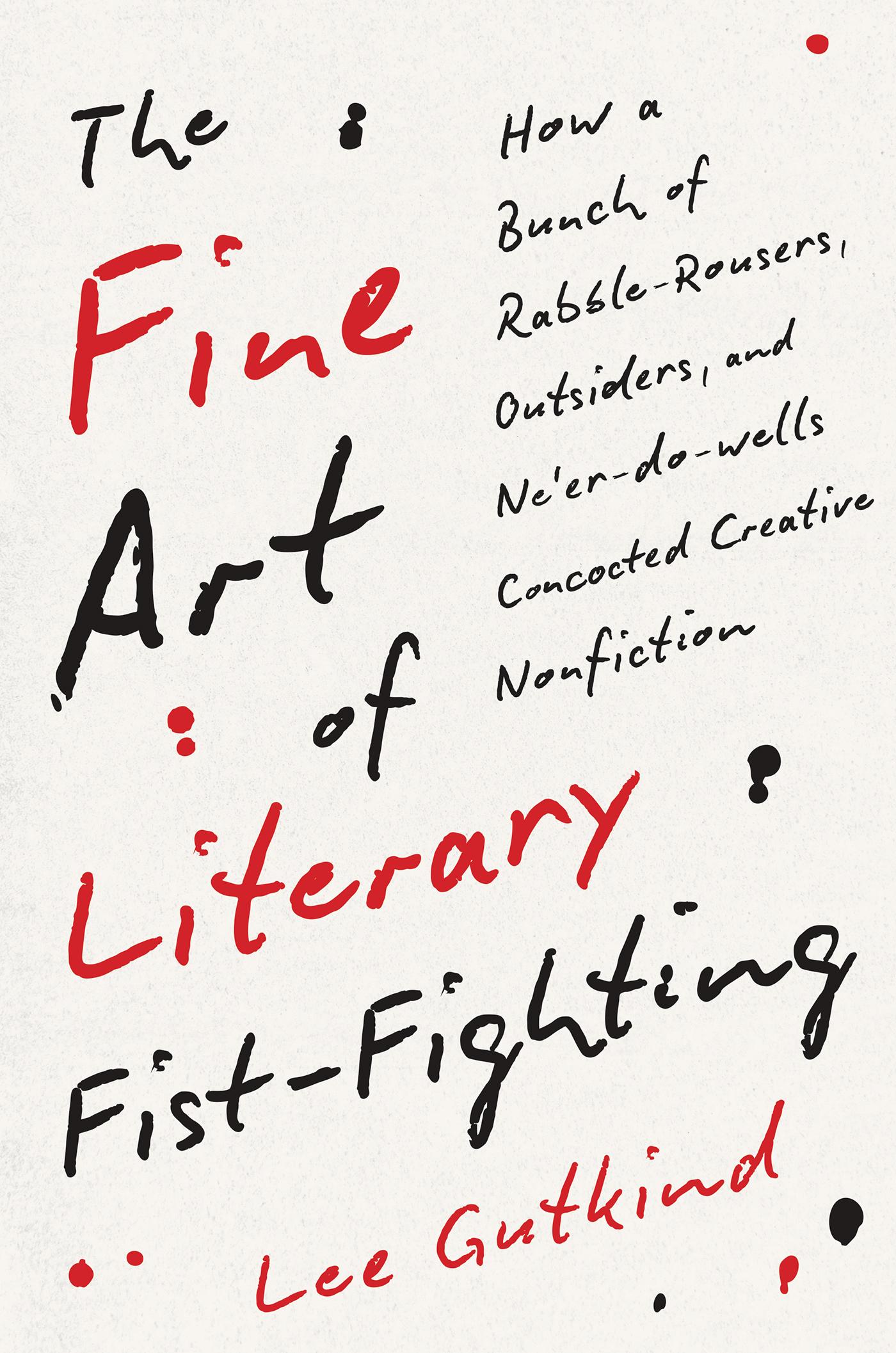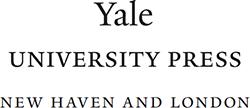The Fine Art of Literary Fist-Fighting: How a Bunch of Rabble-Rousers, Outsiders, and Ne’er-do-wells Concocted Creative Nonfiction Gutkind
Visit to download the full and correct content document: https://ebookmass.com/product/the-fine-art-of-literary-fist-fighting-how-a-bunch-of-rab ble-rousers-outsiders-and-neer-do-wells-concocted-creative-nonfiction-gutkind/
More products digital (pdf, epub, mobi) instant download maybe you interests ...
The Fine Art of Literary Fist-Fighting Lee Gutkind
https://ebookmass.com/product/the-fine-art-of-literary-fistfighting-lee-gutkind/
The Art of Starting: How to Build Your Creative Business from the Ground Up Iona Mathieson
https://ebookmass.com/product/the-art-of-starting-how-to-buildyour-creative-business-from-the-ground-up-iona-mathieson/
Adorno’s Aesthetics as a Literary Theory of Art 1st ed. Edition Mario Farina
https://ebookmass.com/product/adornos-aesthetics-as-a-literarytheory-of-art-1st-ed-edition-mario-farina/
Narratives of African American Women's Literary Pragmatism and Creative Democracy 1st ed. Edition Gregory Phipps
https://ebookmass.com/product/narratives-of-african-americanwomens-literary-pragmatism-and-creative-democracy-1st-ed-editiongregory-phipps/
How to Do Research: And How to Be a Researcher Robert Stewart
https://ebookmass.com/product/how-to-do-research-and-how-to-be-aresearcher-robert-stewart/
Outsiders: Why Difference is the Future of Civil Rights
Zachary Kramer
https://ebookmass.com/product/outsiders-why-difference-is-thefuture-of-civil-rights-zachary-kramer/
Transformations of a Genre: A Literary History of the Beguiled Apprentice Ralph Cohen
https://ebookmass.com/product/transformations-of-a-genre-aliterary-history-of-the-beguiled-apprentice-ralph-cohen/
The Art of Insight: How Great Visualization Designers
Think Alberto Cairo
https://ebookmass.com/product/the-art-of-insight-how-greatvisualization-designers-think-alberto-cairo/
Digital Activism in Russia: The Communication Tactics of Political Outsiders Sofya Glazunova
https://ebookmass.com/product/digital-activism-in-russia-thecommunication-tactics-of-political-outsiders-sofya-glazunova/
THE FINE ART OF LITERARY FIST-FIGHTING
THE FINE ART OF LITERARY FISTFIGHTING
How a Bunch of Rabble-Rousers, Outsiders, and Ne’er-do-wells Concocted Creative Nonfiction
Lee Gutkind
Copyright © 2024 by Lee Gutkind. All rights reserved.
This book may not be reproduced, in whole or in part, including illustrations, in any form (beyond that copying permitted by Sections 107 and 108 of the U.S. Copyright Law and except by reviewers for the public press), without written permission from the publishers.
Yale University Press books may be purchased in quantity for educational, business, or promotional use. For information, please e-mail sales.press@yale.edu (U.S. office) or sales@yaleup.co.uk (U.K. office).
Set in Yale and Alternate Gothic No2 type by Integrated Publishing Solutions.
ISBN 978-0-300-25115-9 (hardcover : alk. paper)
Library of Congress Control Number: 2023938994
A catalogue record for this book is available from the British Library.
This paper meets the requirements of ANSI/NISO Z39.48-1992(Permanence of Paper).
For Montgomery Culver, with my deepest appreciation for his friendshipand support during my earliest days of dreaming of living the writing life
CONTENTS
Introduction
PART 1
Chapter 1: Who Made This Name Up?
Chapter 2: The Changemakers
Chapter 3: The First Creative Nonfictionists
Chapter 4: A Statue of a Woman in the Pittsburgh Airport and All She Represents
Chapter 5: What White Publishers Won’t Print
Chapter 6: F*** the Establishment
Chapter 7: The Imperfect Primer
PART 2
Chapter 8: The Shoe Dog Goes to College
Chapter 9: A Mentor, a Mountain Man, and the Beginning of the Writing Life
Chapter 10: Innocent Victims
Chapter 11: Manipulating Material—and the People You Are Writing About
Chapter 12: A Larger Reality? Or the Untrue Truth?
Chapter 13: Dissing the Memoir
PART 3
Chapter 14: After All, Gentlemen, We Are Interested in Literature Here—Not Writing
Chapter 15: Bricks, Underwear, Fake Vomit—and a Guinness World Record
Chapter 16: Writers Invading the Academy
Chapter 17: Drama and Trauma
Chapter 18: Mud and Coconuts
PART 4
Chapter 19: How Creative Nonfiction Became CreativeNonfiction
Chapter 20: The First Issue: A Dining Room Disaster
Chapter 21: Do Poets Write Prose?
Chapter 22: The First Creative Nonfiction Conference—and George Plimpton’s Revenge
Chapter 23: The Business of Art? Or the Art of Doing the Art Business
Chapter 24: The Last Creative Nonfiction “Fist-Fight”
Epilogue
Acknowledgments
Notes
Index
THE FINE ART OF LITERARY FIST-FIGHTING
INTRODUCTION
I am often asked: “What is creative nonfiction?” Or, in some cases, “What the hellis creative nonfiction?” The answer—or answers—can be complicated because creative nonfiction may mean different things to different people, a characteristic that makes this form so elusive and alluring.
On its very baseline creative nonfiction is a literary genre. Some people call it the fourth genre, along with poetry, fiction, and drama. And it’s an umbrella term for the many different ways one can write what is called creative nonfiction. Memoir, for example, personal essay, biography, narrative history, and long-form narrative reportage may all fit under the creative nonfiction umbrella. Recently, as it has evolved, there have been offshoots to the genre such as speculative nonfiction, auto(biographical) fiction, lyric essay, and the visual essay, to name only a few.
Writers who write creative nonfiction are very different in voice, orientation, and purpose. But what they have in common is that they are, in one way or another, writing true stories that provide information about a variety of subjects, enriched by relevant thoughtful ideas, personal insight, and intimacies about life and the world we live in. And this scope and variety are exactly what make creative nonfiction significant and, these days, so incredibly popular.
“Freedom” and “flexibility” are words I like to use when defining creative nonfiction, for the genre invites writers to push boundaries and open doors, offering them the opportunity to use all of the techniques of the fiction writer (or the poet)—dialogue, setting, description, inner point of view (seeing the world through the eyes of the person they are writing about)—in order to capture a reader’s attention and enlighten and intrigue them through nonfiction.
There are very few rules for writers of creative nonfiction. You can predict the future, speculate about the past, or imagine what could have happened or what someone might have been thinking, as long as you don’t violate the reader’s trust, and in the process your own credibility. There are, however, limits to the freedom and flexibility that make creative nonfiction so attractive and compelling—legal, ethical, and moral issues that are challenging and, in many ways, impossible to clearly define. Freedom and flexibility and daring—are governed by responsibility, not just to the people we write about, but to those who read and publish our work.
Nonfiction itself has had a bad rap in the literary world. For a long time, it was commonly believed that writing nonfiction was generally inferior to the writing of poetry and fiction. “Nonfiction is a pleasant way to walk,” Larry McMurtry once wrote, “but the novel puts one on horseback, and what cowboy, symbolic or real, would walk when he could ride?”1
I remember reading this from McMurtry, who had written a great deal of nonfiction, in addition to his many novels and stories, and feeling more than a little annoyed and, at the same time, amused. He had to be joking, I thought. Or maybe he had just fallen off his horse. I pictured the comedian Rodney Dangerfield, who became rich and famous for the line “I get no respect,” which in many ways has been the story of creative nonfiction in a nutshell.
The addition of the word “creative” to nonfiction was at first controversial, but it gradually reversed the belief that nonfiction was somehow second class, a cut below poetry and fiction. It liberated all writers, journalists especially, releasing them from longstanding rules and boundaries that had been so restrictive and inhibiting. For novelists, poets, and essayists, “creative” encouraged experimentation and offered new avenues of expression. Scientists, physicians, attorneys, were intrigued by the notion of being creative and began to write true stories that humanized their professions. The interest in true stories motivated and opened doors for others who were not writers by trade to share their life experiences, finding
meaning in the process and fulfillment in the connections they forged with readers.
This transition—an awakening to the potential and power of nonfiction that allowed and encouraged creativity—did not happen overnight and was not without resistance and often bitter infighting. Change was difficult for the literary, journalistic, and academic communities, steeped in tradition and long resistant to new ideas, to accommodate. Indeed, the resistance in some corners far exceeded the scale of the change itself. As I point out in this book, the change was hardly drastic and was not really, when one looks back over the history of nonfiction, much of a change at all. Writers, including familiar and famous names you will recognize, such as Daniel Defoe, Charles Dickens, George Orwell, and many others, had been writing nonfiction that was creative and imaginative for centuries. The change, the adjustment that it precipitated, had much more to do with the approach or attitude toward nonfiction rather than its content and, of course, the idea that creative and nonfiction were not mutually exclusive. That change in approach and attitude is ongoing. The scope of nonfiction today, if it can still be called nonfiction, continues to evolve.
This book documents the evolution of the genre from its controversial beginnings to the respect and legitimacy it has achieved today. It highlights some of the history of the genre—the authors and events that most inspired and affected me and other writers of the genre at the time, including the impact of the new journalism, the reemergence of the essay, the surge of memoir. This book will be eye-opening to students and beginning writers. It will open doors and opportunities for more experienced writers who want to push the limits of their work and ideas and reach new readers.
Perhaps more important, this book is about the meaning of the genre, the revolution it initiated and the incredible impact over the years that it generated not just in literature or journalism, but to the changing culture and values worldwide. It’s about how women (and minorities), long ostracized by a white male good old boys’ network,
so much that they were sometimes not even permitted to write in their own names, in time became the dominant voices of the genre. And so very relevant today, it is about the ethics and morality that challenge writers, the behind-the-scenes revelations of how and why writers manipulate their material or, in some cases, make stuff up. This book will be of interest to all writers and to unknowing readers who may be surprised to learn that the true stories they have read and admired may not be as true as they believed. Readers will learn about the tricks of the true-story trade, like the compositing of characters, the compression of time and place, and the phrases writers often employ, like “larger reality,” “the untrue truth,” and “the poetic truth,” to justify those embellishments. Finally, the book will tell you how and why creative nonfiction became the people’s genre, how anyone with a story to tell, no matter how personal and intimate, no matter their background or education, was provided a forum and a vehicle to express themselves and justify and share their lives, their work, and their beliefs.
This book is not, however, meant to be a thorough and comprehensive examination of the history of the genre, which goes back hundreds of years and would probably require volumes; and if it were, I would not be the one to write it.
I am not, have never been, a scholar, by any means. In fact, unlike many of the students I teach or the writers I edit, I do not have a Ph.D. or MFA or any advanced degree. I was never a cardcarrying journalist or a failed novelist. I was just, at the time, the middle 1960s when I started out, a hippie motorcyclist with shoulder-length hair and unruly sideburns and all of the turquoise accoutrements of the era—who was also a wannabe nonfiction writer, trying to figure out what the writing life was all about and somehow become a part of it.
Until, eventually, I stumbled into the academy, or, as many of my colleagues in the English department at the University of Pittsburgh might have then said, “barged” my way in—long before creative nonfiction became creative nonfiction. As it turned out, I was in the right place at the right time, and it is fair to say that I was
somewhat of an opportunist. I realized in the early 1970s that some sort of literary transition in nonfiction and journalism was occurring, a transition that many writers, critics, and scholars, in and out of the academy, vigorously resisted. This conflict excited and invigorated me, and I instinctively, and perhaps naively and sometimes provocatively, defended it and simultaneously pushed it forward. To go back to McMurtry, I climbed on the creative nonfiction horse and rode it like hell.
Over time, mostly because of the ongoing resistance with which I was confronted, I became more than a little obsessed. In my own mind, the acceptance of creative nonfiction and the acceptance of an outsider-motorcyclist-interloper in the academy were one and the same thing. I went after that acceptance with a freewheeling or, some have said, “crazed” resolve.
In addition to starting CreativeNonfiction,the first literary journal to publish creative nonfiction exclusively, the publication that would become the flagship of the genre, I helped establish, despite ongoing and sometimes petty resistance from my colleagues, the first MFA program in creative nonfiction at the University of Pittsburgh, and, later, the first low-residency MFA program, at Goucher College. I started a creative nonfiction book series that led to a full-fledged book imprint. I initiated the first all-creativenonfiction writers’ conference, which brought together for the first time the most prominent voices of the genre—Susan Orlean, John McPhee, Gay Talese, Mary Karr, Joyce Carol Oates, Tobias Wolff, and George Plimpton, to name just a few—to interact with student participants who came from throughout the world to learn about creative nonfiction. These and many others, like Norman Mailer, Lillian Ross, Truman Capote, Joan Didion, brought respectability to the genre and opened doors for the generations of writers they inspired.
Over the years, with every opportunity, I have taken my creative nonfiction message on the road, across the United States and into Australia, China, Egypt, New Zealand, Ireland, England, Israel, beating the creative nonfiction drum. Later I introduced creative
nonfiction into a science policy think tank. James Wolcott, in a scathing article that ridiculed the genre in VanityFairin 1997, in which he dubbed me “the godfather behind creative nonfiction,” compared me, in reference to all of my drum-beating activities, to a “human octopus.”2
My version of the evolution of the genre is rooted in the changes occurring in journalism in the 1960s and 1970s, but there are, for sure, many other ways to tell the creative nonfiction story. There are those who would begin in the sixteenth century, with Michel de Montaigne, who coined the term “essay” and is often referred to as the father of the essay.
It is certainly true that essays have always contained many elements of what came to be known as creative nonfiction, and maybe it would even be all right to say, in retrospect, that Montaigne was the first creative nonfiction writer. But the emergence of creative nonfiction, as the genre—the umbrella—is known and accepted today, did not take place until hundreds of years after Montaigne. Essayists, however, eventually joined and invigorated the creative nonfiction movement and turned it into the rich, diverse, and legitimate genre it is today. There are probably more essayists writing creative nonfiction today than there are journalists. Even journalists these days tend to refer to their long-form work as essays. The word “article” has become somewhat of an anachronism.
A major part of the story I am telling in this book is how creative nonfiction came to be accepted in the academy—an unlikely wellspring for what started as such an unscholarly invasion of an established, conservative, and seemingly impenetrable bastion. And how over a period of years, writers in the academy, in creative writing programs, began developing a creative nonfiction pedagogy and a community for their students, and how those students and their students after that transformed a bare blip in the literary landscape into a legitimate and flourishing genre that would soon equal or outpace poetry and fiction. And how the writers in the academy brought together what were then two factions—journalists
and literary writers—and how this union helped change the course, the flavor, and the direction of the growth of literary art, not just in the United States but from a global, all-encompassing perspective. And not just into the humanities, but into many other academic disciplines.
But getting to where we are today—to the ascendancy of creative nonfiction as the fourth and most active and visible genre—was a real battle, an often disagreeable and circular series of debates over long-held and outmoded ideas, over class and prejudice, over literary and journalistic turf, and, not surprisingly when writers are involved, over insecurity and self-identity and, most of all, over words. These debates went on for many years, until gradually and sometimes painfully, nonfiction that was creative was recognized as an art form equal to poetry and fiction.
More than any other factor over the past fifty years, it was what I like to call, with more than a hint of embellishment, the “literary fistfighting” of these debates, between those who held the line and resisted change and those who defied and challenged them, that triggered an evolution of literary art, expanding its scope in ways that might have never been predicted or imagined. This is the story of how that all came about, told from the perspective of an outsider who inadvertently and reluctantly became an insider.
PART 1
CHAPTER 1
WHO MADE THIS NAME UP?
The name, or label—creative nonfiction—is new, or newish. Over the years, the genre has had many names—such as “literature of fact,” “literature of reality,” “belles lettres,” “verfabula,” “documentary narrative,” “extended digressive narrative nonfiction.” Or just plain old “essay.” Some of these names or labels aren’t very nice—or fair. Like “parajournalism,” “parody journalism,” “gutter journalism.”
Some responses to the name and the meaning of creative nonfiction have been downright mean-spirited. James Wolcott, in his VanityFairarticle, lambasted creative nonfiction as “a sickly transfusion, whereby the weakling personal voice of sensitive fiction is inserted into the beery carcass of nonfiction.”1 And Michael Anderson, an editor for the NewYorkTimesBookReview, told a reporter from Poets&WritersMagazine:“Creative nonfiction, I am so sick of this bullshit. Even the term is an oxymoron. If it’s creative, it’s not nonfiction. If it is nonfiction, it is not creative. I don’t know what it is other than people making stuff up.”2
“Creative,” as Anderson made clear, was the most contentious of the two words, especially for journalists, because to them “creative” could mean that the writer was lying, exaggerating, imagining, spinning—not truly reporting, objectively, true to fact. But even “nonfiction” has had its detractors. To some writers, the word “nonfiction” was, in a way, demeaning. For the historian Barbara W. Tuchman, a two-time winner of the Pulitzer Prize (for TheGunsof Augustand StilwellandtheAmericanExperienceinChina), the term “nonfiction” was “despicable—as if we were some sort of remainder. I do not feel like a Non-something,” she insisted. “I feel quite specific.”
Laboring to think of a name that might replace “nonfiction,” she turned to Webster and looked up “fiction,” which was defined as “opposed to ‘Fact, Truth and Reality.’ ” Which led to her idea: “I thought for a while of adopting ‘FTR,’ standing for ‘Fact, Truth, and Reality’ ”; but she then added: “Historians were actually realtors. Real Estate, when you come to think of it, is a very fine phrase and it is exactly the sphere that writers of nonfiction deal in: the real estate of man, of human conduct. But I cannot very well call us ‘Realtors’ because that has been pre-empted—although as a matter of fact I would like to. I wish I could get it back from the dealers in land. Then the categories could be poets, novelists, and realtors.”3
Some writers and editors today prefer the term “literary journalism” or “literary nonfiction” or “narrative nonfiction” or just plain old “essay.” But even though no one has been completely satisfied, creative nonfiction, considering all the ground it covers, over the years has worked best and has been generally accepted. Still, there will always be naysayers with caveats.
I did not make up the term “creative nonfiction.” I began using it, off and on, when a colleague, a mentor at Pitt, Montgomery Culver, commented, after reading my first book, that I was “trying to be creative with nonfiction.” But I did not know then that the term had been used sporadically and sparingly over the years. David Madden, a poet, essayist, and novelist, first used the term in 1959 at the University of Tennessee where he was then teaching. Half a dozen years later, at Ohio University in Athens, he taught his first class in creative nonfiction, titled “American Dreams, American Nightmares.” And in 1969, Madden reviewed Frank Conroy’s memoir, StopTime, describing it as creative nonfiction. Around the same time, Seymour Krim, a journalist and novelist, taught a class once or twice at Columbia University called Creative Nonfiction. The term didn’t quite catch on—although its roots can be traced back to a quarter century before Madden and Krim and, surprisingly, not to the United States, where creative nonfiction as a movement first emerged.4
The label was first introduced by the Canadian Authors Association, which had established awards in the early 1930s for Canadian authors, in fiction, poetry, and what they were then describing as “general literature”—meaning, to them, nonfiction. But submissions in general literature invariably doubled or sometimes tripled those in poetry and fiction. Which made it more difficult for those in general literature to win a prize.
What to do? Well, they were academics mostly, so of course they formed a committee and held a meeting—a number of meetings, in fact. And they realized as they examined and discussed each book that had been submitted for consideration that the general literature books could be categorized. There were books that were obviously “academic,” what they described as “works of learning, bound by facts”—which would be for the scholar. And there were “works of graceful style, in which imagination played a leading part (as in essays, descriptive writing and some biographies) which would appeal to the ordinary reader.” And this category they called “creative nonfiction.” Not surprisingly, the “graceful style” group consistently won over more “substantial books” (such as histories), in which the authors did not “feel free to be equally selective or imaginative when dealing with facts.”
With an award for the new category duly established, the inaugural winner was a political journalist, Bruce Hutchison, for his book TheUnknownCountry:CanadaandHerPeople,which was described by the committee as “an attempt to paint a clear-cut and revealing picture of the Dominion . . . its people, its history, its virtues, its shortcomings, its joys, its sorrows.”
And based on his biography, written for the awards ceremony that year, Hutchison was the perfect recipient of the first legitimate creative nonfiction award—a virtual model of how many of us creative nonfiction writers might describe ourselves years back or even today: “Mr. Hutchison claims he has no career and will continue to avoid having one. . . . His job has taken him across the length and breadth of the Dominion, to the Imperial Conference in London in 1937 (with a motor trip over most of Europe), and many trips to
Washington and other parts of the U.S. He has written short stories for SaturdayEveningPost,Collier’s,Cosmopolitan,American,Liberty. One day he hopes to return to fiction writing when he finds it no longer necessary to eat regularly.”5
The Canadian awards for creative nonfiction continued for a number of years before fading away, mostly for lack of funding. But the debate over naming, and over the very existence of the genre, continued and grew more heated from the 1960s onward. And maybe this is not surprising, and not a bad thing. Writers are motivated by competition and provocation, powered by ego, insecurity, and their passion. Controversy, debate, challenge—the essence of acting and being contrary—leads to creativity, which is also the essence of the genre, what creative nonfiction had been and will continue to be, in the end, all about.
Moreover, if it wasn’t for this “name-game” over identity, the genre might have just quietly been buried into the literary ecosystem, not as a genre like poetry or fiction or drama, but as something else—an aberration, on the fringe of the mainstream, unconventional, like maybe jazz was considered early on by music aficionados.
In some ways, in fact, creative nonfiction is exactly like jazz. It is a rich mixture of flavors, ideas, and techniques, some of which might be newly invented and others as old as writing itself. In some ways, both jazz and creative non-fiction have been discounted and undermined, considered by many purists as not quite legitimate. And it has been confronted by the same kind of critical skepticism as jazz musicians have had to confront.
Duke Ellington, renowned composer, refused to call what he wrote and performed “jazz.” He once told his biographer Terry Teachout that most Americans “still take it for granted that European music classical music, if you will—is the only really respectable kind . . . jazz [is] like the kind of man you wouldn’t want your daughter to associate with.”6 Charles Mingus, another celebrated Black jazzman, felt much the same way: “To me the word ‘jazz’ means nigger,
discrimination, second-class citizenship, the whole back-of-the-bus bit.”7
I won’t say that we writers of creative nonfiction and proponents of the label, early on or now, were in the back of the literary or journalistic bus. We weren’t even on the bus. We were simply an unacknowledged part of a thing that many insisted did not exist as an entity, or, like Voldemort, that could not or should not be named. But we needed a name, even an inadequate one, in order to define or describe what we were doing and make us count. It was a question of belonging—a destination, a label, a meeting of the minds —for all of us creative nonfictionists to come together, dialogue and share our work, and earn a certain legitimacy that had been denied us from the very beginning, at least three hundred years ago. But it took a while, a very long while, for creative nonfiction . . . to become creative nonfiction . . . in name and in fact.
The story of the modern-day emergence of the creative nonfiction genre begins with another name or label—and another leader, a campaigner who did not just ride a horse but brought together an entire cavalry of writers, leading the charge with a loud and resounding symbolic “varoom.”
CHAPTER 2
THE CHANGEMAKERS
I clearly remember reading for the first time Tom Wolfe’s fiftyone-page introduction to an anthology, TheNewJournalism,that he had edited with E. W. Johnson. I read it right after it was published in 1973, not long after I had started teaching, and I thought immediately: “This will be the perfect teaching tool.” And it was— almost.
What Wolfe had written was more than an introduction; it was like a proclamation. I could imagine Wolfe, in his characteristic white suit, standing on a stage behind a podium, in front of a crowd of admirers, waving his arms and preaching the new journalism gospel like the evangelist Billy Graham. It is not a far reach to say that Wolfe was theevangelist for the new journalism, and without him it is quite possible new journalism would not have ever achieved the literary status it and creative nonfiction have today.
Wolfe’s introduction was actually a compilation of articles written over the previous few years for Esquiremagazine and a really terrific article published on Valentine’s Day 1972, “The Birth of ‘the New Journalism’: Eyewitness Report,” in NewYorkmagazine. Much of what Wolfe was saying he had said before, as had a few others, but this introduction put it all together—his entire new journalism schtick in one definitive and detailed narrative statement.
Wolfe had two primary objectives in writing his intro. First, he meant to announce the dethroning of the novel as what many considered the pinnacle of literary success and achievement. Second, he was demonstrating that there was something happening in the literary world—over the previous decade, and maybe even much longer—that had become a movement that would propel the
first new direction in literature in half a century. This is what he was calling, for lack of a better name, “the new journalism.”
I personally didn’t care about the first part—dethroning the novel as the pinnacle of success in literature. And I don’t think anybody else did either, including some of the writers he thought would be vulnerable to this dethroning, such as Saul Bellow, John Updike, and Philip Roth, who were, according to Wolfe, “sweating it out” because of the rise of new journalism. What really resonated with me was how he took the old traditional journalism to task and put together all of the elements of this new journalism so that even non-writers, folks who had maybe never even heard of the new journalism before, could understand it.1
The old journalism, nonfiction, the flood of information presented to readers in newspapers and magazines at that time and in the traditional way—what Wolfe characterized as writing with “a beige tone”—could put you to sleep, he wrote. It was like painting a wall with neutral shades so whatever bits of color were in the room would stand out, a reasonable approach, perhaps, but readers were mostly bored to tears, not understanding or caring about what the writer was doing or thinking or why, and therefore losing interest and ceasing to read. “The standard nonfiction writer’s voice was like the standard announcer’s voice . . . a drag, a droning,” he said.2
And it wasn’t just the voice and attitude that Wolfe was rejecting, it was the literal repetitive formula, that who-what-when-where-andmaybe-why “inverted pyramid” style that so many traditional journalists adhered to when reporting news. That’s when you start your story with the most important factor, usually the “who,” and then place the other Ws in order of importance from that point on until all or most of the W factors were dealt with. And when you turned in your story to the copy desk, the editor could then—if there was a space problem on the page or in the paper, too much news on any given day—just lop off, delete, the less important W factors and the reader would still get the essence of the story—the most important part of the news. Very formulaic. And not that it wasn’t a challenge. Not an easy task to break down a potentially complicated
and many-factored idea concisely and in Ws—but it wasn’t rocket science. And maybe not so creative or literary, either.
Even the feature stories were pretty much programmed and formulaic. Yes, you could lead with a clever phrase or an anecdote— something to entice the reader—but then, almost always, the reporter would just revert back to the news, the information. Maybe the reporter would end the story by tying in the anecdote from the lead in the last paragraph, depending on available space, but it didn’t quite capture the potential of the story, the threedimensionality that made the story real and memorable—what he was calling the vital elements of new journalism.
By vital elements, he meant, for one thing, the development of character. People in the story might have a distinctive appearance or manner; and they were not, always, just talking heads, providing pithy quotes. They talked to the reporter or to one another, had conversations; they dialogued. And there were status details, often symbolic of a character’s behavior, their style, the way they expressed what they thought or hoped was their position in the world. The idea of objectivity, which had always been a sham, was discounted. In the new journalism, the writer had a voice; no beige tone here. Writers could observe and sometimes, in one way or the other, respond to what was happening in the story, using the forbidden “I” word in reference to themselves. All of these aspects, or as many as possible, were presented in a scene-by-scene structure that was action-oriented, and meant to keep the reader intrigued and turning pages. This—writing in scenes—was, more than anything else, the key structural aspect of new journalism.
In his introduction, Wolfe singled out a scene written by Gay Talese, then a features writer and reporter for the NewYorkTimes, in his Esquiremagazine profile of the former heavyweight boxing champion Joe Louis, which starts with this scene.
“Hi, sweetheart!” Joe Louis called to his wife, spotting her waiting for him at the Los Angeles airport. She smiled, walked toward him, and was about to stretch up on her toes and kiss him—but suddenly stopped.
“Joe,” she said, “where’s your tie?”
“Aw, sweetie,” he said, shrugging, “I stayed out all night in New York and didn’t have time ”
“All night!” she cut in. “When you’re out here all you do is sleep, sleep, sleep.”
“Sweetie,” Joe Louis said, with a tired grin, “I’m an ole man.”3
Encountering Talese’s profile for the first time, Wolfe was amazed: “Whatthehellisgoingon?” he wrote. “With a little reworking the whole article could have read like a short story.” Meaning that not only had Talese led with a scene, but that Talese had included other scenes that might have been rearranged so that the entire piece would flow from beginning to end just like a short story—with the informational elements fitted in more smoothly and perhaps unnoticeably as part of the narrative.4
Wolfe’s reaction shows how uncertain journalists were at the time about writing in this way—manipulating structure, emphasizing narrative. Downgrading, in a way, the reporting? Or maybe even minimizing it, as it sometimes turned out. This was, or so it seemed in 1962, a significant departure.
Talese, in his introduction to a collection of his early work in 1970, FameandObscurity, explains that his Joe Louis piece was in some ways an experiment, or an awakening, “my first attempt at what would be called ‘the new journalism’ ”—part of an evolution in his style. The article, Talese wrote, “opens with Louis, fatigued after three frolicsome days in New York City, arriving at the Los Angeles airport and being met by his wife . . . a scene that could have led into a short story situation; later in the article, the writing style falls back on straighter reportage, including my own uncertainty with the form at that point, but still later the approach is again scene-setting and dialogue and away from rigid reporting.”5
Talese’s profile of the Broadway director Joshua Logan, published in Esquirethe following year (December 1963), was much less structurally erratic—a smoother and more dramatic narrative. It also demonstrated Talese’s uncanny instinct to find and capture scenes— by devoting as much time as needed when researching every story
(he called this “the fine art of hanging out”), to discover a brilliant flash that thoroughly illuminates the characters he profiles.6 A more traditional journalist might have avoided or not even recognized these incidents as dramatic or insightful material. Or, as he told Carol Polsgrove for her history of Esquirein the 1960s, ItWasn’tPretty, Folks,ButDidn’tWeHaveFun?“just being there, observing, waiting for the climactic moment when the mask would drop and true character would reveal itself.”7
While he was hanging out for his Logan piece during a rehearsal, Talese recalled in FameandObscurity, Logan and his co-star, Claudia McNeil, “got into an argument that not only was more dramatic than the play itself but revealed something of the character of Logan and Ms. McNeil in ways that I could never have done had I approached the subject from the more conventional form of reporting.”8
Talese has been amazingly productive during his long career—he is still writing—but he will be most remembered for a scene published in 1966 taking place in a private Beverly Hills social club. Talese was on assignment for Esquireto write a profile of Frank Sinatra, but when he arrived in Hollywood he was denied his interview, even though it had been scheduled and promised, because Sinatra was irritable and down in the dumps; he had a cold. Suddenly forbidden to talk with Sinatra and fearing he would lose his assignment, Talese decided to follow Sinatra around, and on this night he observed quite a telling confrontation: Ol’ Blue Eyes encountered a young screenwriter, Harlan Ellison, and insulted his work, the movie TheOscar , calling it “crap,” and also Ellison’s mode of dress, especially his “Game Warden boots.” Talese recreated the scene, word for word, insult by insult, pretty much capturing Sinatra’s imperious personality, with or without a cold. The scene itself, with many other scenes in this profile, has become one of the most memorable and talked-about “new journalism” set pieces in the history of the genre. Not long ago, in celebrating the seventieth anniversary of Esquire’s founding, its editors decided to reprint the best story it had ever published—“Frank Sinatra Has a Cold.” It was fifteen thousand words.9
Not only did Talese perfect the scene and the fine art of hanging out, he and Wolfe personified something about the attitude of the movement in that they didn’t disappear into the background; they didn’t hesitate to draw attention to themselves and make themselves characters in their stories; you could see that in the way they dressed. Wolfe had style, panache, charisma. He was bursting, it seemed, with confidence. His writing and his persona commanded attention. This was in some ways his real mission for himself and new journalism.
Writers, whether they want to admit it or not, he told one interviewer, “are in the business of calling attention to themselves.” Wolfe was masterful in that regard. And he did want attention— always—and did everything he could to make that happen, including the way he presented himself: in his white suit and vest, usually with a high-necked blue-and-white-striped shirt complemented by a creamy silk necktie—wherever he was—and whenever, summer or winter. You can see him now in all of his white-suited majesty on display in the National Portrait Gallery in Washington, D.C.10
Wolfe was a good-looking guy, tall and blue-eyed, with a striking mop of sandy-colored hair that made him seem even taller. Compared with other journalists at the time, he was quite an intellectual, holding a Ph.D. in American studies from Yale University. And he was fit—an outstanding collegiate athlete so naturally talented that he was invited for a tryout with the New York Giants baseball team. Perhaps, if things had gone differently for Wolfe, he might not have been breaking journalistic barriers and hitting solid literary base hits at a really high average; he would have been swinging a bat in National League stadiums and hitting home runs. And maybe even then, he might have found a reason to wear a white suit.
Wolfe’s costume, as stylish and over the top as it was, was no match for Gay Talese’s elaborate wardrobe. Talese’s father was an old-fashioned tailor who had emigrated to Ocean City, New Jersey, from Italy in the 1920s, and he schooled his son in how to dress—
from ascots and diamond cufflinks down to yellow silk suits and spitshined pointed-toe loafers.
Talese and Wolfe might have seemed like competitors, especially in the New York literary and journalistic cognoscenti—in style, at least. Pundits repeatedly remarked, whether true or not, that the duo would often walk along Madison Avenue together, periodically posing, side by side, in reflecting store windows, comparing and admiring their outfits. But Wolfe was clearly second string, attirewise, because he always seemed to look basically the same, albeit with some fresh accoutrements to his white on white. But, in contrast, Talese was and is a work of art each day, walking Madison Avenue, or summering in South Jersey, Ocean City, or Connecticut, a more recent retreat, all decked out at a supermarket, arriving, top down, in his classic yellow 1957 TR3.11
Wolfe, who died in 2018 at age eighty-eight, contended that his white suit “writer” costume came about by accident, although he immediately discovered its effect, which obviously delighted him and fulfilled in a perverse way his need to be noticed. “I had a white suit made that was too hot for summer,” he once told an interviewer, “so I wore it in December. I found that it really irritated people—I had hit upon this harmless form of aggression!”12
Aggression was not exactly what I felt when I first read a long article in Esquirein 1963 about the hot rod and custom car craze in Southern California and the automobile “artists” like George Barris who embellished his creations with “Kandy Kolors.” I was, rather, astonished and a bit puzzled. Who was this writer, a guy I had never heard of named Tom Wolfe, and what in hell did he think he was doing? But I read the whole piece in one sitting.
The article wasn’t just about cars; there was a longer and much more intriguing scope to it: An emerging teenage culture in Southern California, weird new ways of dancing—the “hully-gully,” “the shampoo,” and “the bird”—and clothes and hairstyles. “Bouffant hairdos . . . and slacks that are, well,” Wolfe wrote, “skin-tight does not get the idea across: it’s more the conformation than how tight
